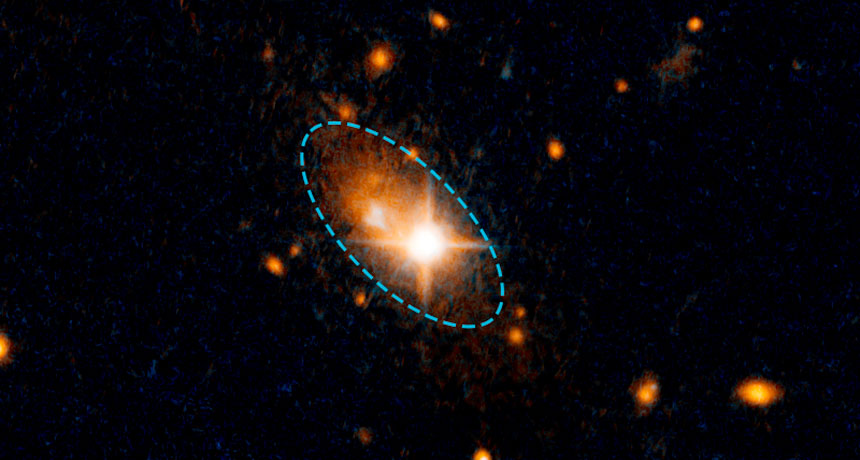Supermassive black hole gets kicked to the galactic curb
Gravitational waves may have delivered boot toward deep space

ON ITS WAY OUT A radiation-gushing supermassive black hole, quasar 3C 186 (second brightest blob in the blue oval), appears to be zooming away from its galaxy’s center (brightest blob in blue oval). The extreme exit may be a result of gravitational waves from merging black holes.
M. Chiaberge/STScI, JHU/ESA, NASA